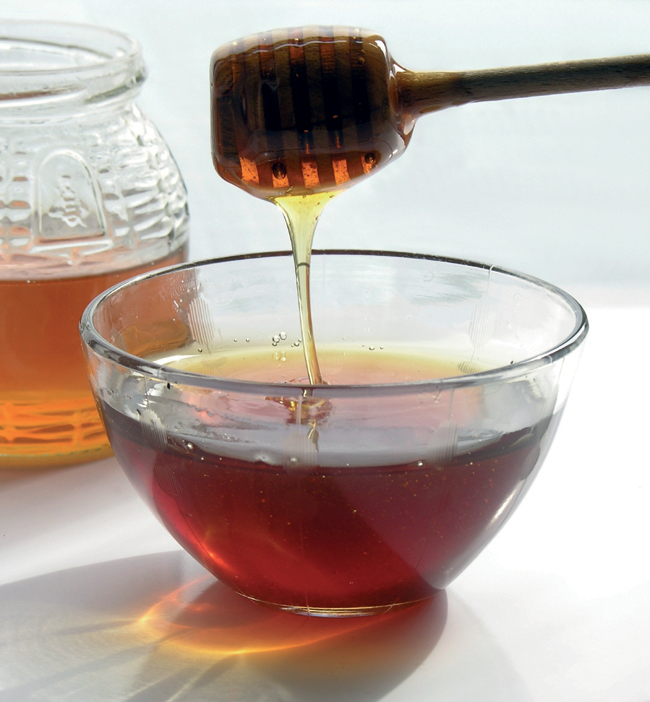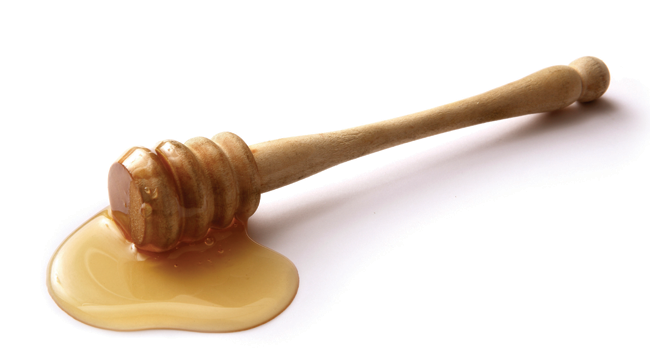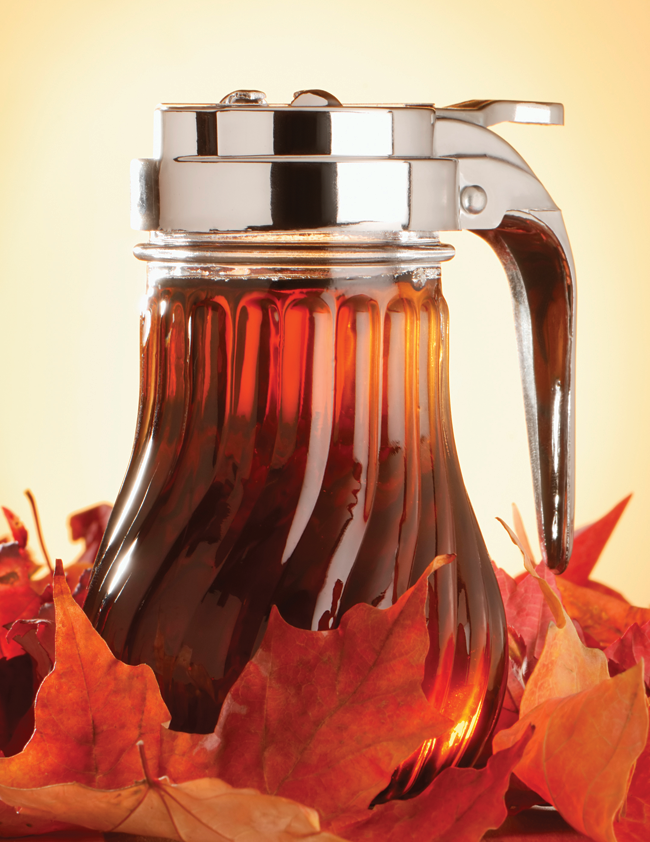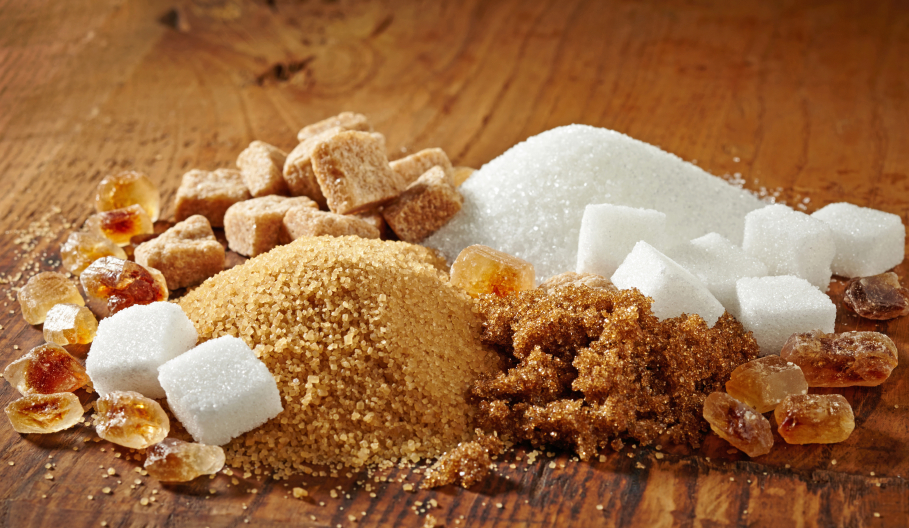Nutritional therapist Dr Eva Detko looks into the pros and cons of using common sugar alternatives to sweeten up your baking…

When thinking about substituting sugar in a recipe, it is important to remember that, apart from sweetness, sugar also provides structure, texture and flavour to baked goods. Therefore, replacing sugar in recipes can be a bit of a balancing act.
Fruit and Vegetables
Naturally sweet ingredients such as fruits (e.g. apricots, bananas, dates, raisins, figs etc.) and grated sweet vegetables (carrots, parsnips, beetroot etc.) work well in baked goods. Using fruit or vegetables adds moisture and flavour to the recipe, as well as fibre and other valuable nutrients. You can either add them whole, grated, as a purée, chunks, paste (dried fruit can be made into paste by blending with a bit of water), or juice. Sugar-free jams are also a good alternative. Naturally, when using juice, you will need to reduce the amount of the other wet ingredients in the recipe.
Stevia
Stevia is a plant that is native to South America, where it has been used for hundreds of years. Stevia contains no calories. Stevia products vary in potency and taste. You may want to try a few different brands to find one that works for you. It is recommended to source a pure stevia extract, as many stevia-based products contain cheap fillers or additives that you may not want to ingest. The actual stevia content of those products is usually quite low.
It’s worth noting that stevia may have a lowering effect on blood sugar. Additional considerations when using stevia include allergy to sunflower and aster plant family (Asteraceae), and medications containing lithium. Check with your GP if you are unsure if stevia is the right substitute for you.
Stevia works well in both baked as well as non-baked recipes, such as custards, smoothies and chocolate. With most pure stevia extracts, one serving is an equivalent of 1 level teaspoon of sugar (5 grams). This means that if a recipe calls for 100 grams of sugar, you will need to replace it with 20 servings of stevia. Stevia is much sweeter than sugar, so one serving is a very small amount. Therefore, the volume of your recipe will be affected. You may have to add an additional dry ingredient (e.g. ground nuts, coconut, dried fruit) to obtain the right volume and texture. Alternatively, try baking the recipe in a slightly smaller pan. I find that in baked goods stevia works best when mixed with a small amount of another substitute, such as raw honey or coconut sugar, but it can easily be used on its own when making chocolate.
Honey

Firstly, if you are going to use honey to replace sugar, I would encourage you to source unpasteurised (raw) honey from a reputable source. Raw honey contains a number of nutrients and is also known for its immune-modulating properties. If you use the processed, cheap honey, you may as well be using refined sugar. Whether raw or not, honey has a high carbohydrate and calorie content. The fructose content of honey is 40% and since fructose is considered the most damaging form of sugar to the human body, honey should be used in moderation.
Honey works well in moist, dense bakes (flapjacks, sticky cakes, muffins), as well as quick breads, puddings, and ice creams. Honey is 25-50% sweeter than sugar so you will need to use less of it. You will need to reduce the amount of liquid in the recipe (by about 20%) and the baking temperature to prevent your bakes from browning too quickly. You may also want to add a bit of bicarbonate of soda to counteract the acidity of the honey and help the rise. Honey is not suitable for using in recipes that require creaming.
Agave Syrup
Agave syrup is a sweetener made from the agave cactus. Agave syrup is sweeter than sugar and tends to be quite processed. If you want a slightly less refined version, go for raw agave syrup. However, bear in mind that whether raw or not agave syrup is high in fructose (60%-90% depending on the way it is processed). This is comparable to high-fructose corn syrup, which is not good news.
In the same way as honey, agave syrup works well in dense, sticky bakes. You need to reduce the amount you use by approximately 30-40% when replacing sugar in a recipe. Again, you will need to slightly reduce the amount of liquid in the recipe as well as the oven temperature, and add some bicarbonate of soda.
Maple Syrup

Maple syrup is made from the sap of maple trees. It does contain some nutrients, but you must ensure you buy the real thing and not maple-flavoured syrup. Maple syrup is slightly lower in calories and carbohydrates than honey, but it still contains about 70 grams of sugar per 100 grams. As ever, moderation is key.
Maple syrup is sweeter than refined sugar so less is needed when substituting sugar in recipes. The taste of maple syrup varies depending on the grade. Darker grades are considered better for baking. As with honey and agave syrup, the amount of liquid and oven temperature needs to be reduced, and a bit of bicarbonate of soda may be required.
Brown Rice Syrup
Brown rice syrup is made from brown rice subjected to an enzymatic reaction. Be aware that some brands may contain added barley malt or corn syrup. Brown rice syrup has a mild taste. Unfortunately, it contains more calories than refined sugar and it is not as sweet as sugar, honey or maple syrup. This means that it needs to be substituted using 1:1 ratio, which makes the final product higher in calories and sugar. Additionally, there have been some concerns about levels of arsenic in brown rice products.
Brown rice syrup can be used in the same way as honey, maple or agave syrup. The only difference is that you will need to add more of it.
Molasses
Cane molasses is a by-product of the refining of sugar cane. Molasses contains some nutrients, but the calorie and sugar content of molasses is only slightly lower than that of honey. As molasses is not as sweet as refined sugar, you will need to use more when substituting sugar in a recipe.
Molasses has an intense flavour, which some people can find overpowering. It is recommended to mix molasses with other sweetening agents (e.g. honey or maple syrup), otherwise the extent to which the taste is altered may not be desirable. Molasses works well in spiced breads, cakes and biscuits. Due to its high acidity, it is recommended to add some bicarbonate of soda. The liquid in the recipe should be reduced.

Coconut Palm Sugar
Made from the sap of coconut flowers, this sugar can be sourced in block, paste or granulated form. In terms of its nutritional merits, coconut palm sugar is hardly a superfood, but it does contain some vitamins, minerals and phytonutrients that are not present in table sugar. The overall carbohydrate and calorie content of coconut palm sugar is comparable to refined sugar. Coconut palm sugar is 35-45% fructose.
Coconut palm sugar (such as Coconom (www.coconom.com)) has a caramel-like, deep taste and softer texture than refined sugar, resulting in denser pastries. It can be used for cookies, shortbreads, cakes, candies and frostings. Adding extra fat (e.g. oil, ground nuts) or moist ingredients (e.g. puréed fruit) will compensate for its dryness. When making sweets, it is important to remember that the burning point of coconut palm sugar is about 10 degrees lower than that of white sugar.
Xylitol
Xylitol is a sugar alcohol. Xylitol is naturally occurring in low concentrations in the fibres of many fruits and vegetables, but the process of extracting it involves the use of different man-made chemicals. One gram of xylitol contains 2.4 kilocalories (kcal), which is less than one gram of sugar (3.87 kcal). The ingestion of xylitol causes less of an increase in plasma glucose and insulin concentrations compared to the ingestion of glucose.
Xylitol can have a laxative effect and too much xylitol can cause bloating and cramping. The best approach is to assess your own tolerance to xylitol.
Some people choose a ratio of 1:1 when substituting sugar for xylitol. Depending on a recipe this could potentially mean a lot of xylitol, so a more prudent approach could be to mix it with another substitute, e.g. coconut sugar or honey. It is important to bear in mind that xylitol on its own will not work well in recipes requiring yeast. It also tends to require a greater amount of a binding agent when baking biscuits. Cakes sweetened with xylitol do not colour very much (xylitol does not caramelise) but this should not be a problem for darker cakes, e.g. those containing cocoa, coffee, or spices such as cloves and cinnamon.
Other Sugar Alcohols
Erythritol contains almost no calories. In large doses erythritol can cause diarrhea, headaches, stomach aches, gas and bloating. It has been used as an insecticide. Erythritol is not as sweet as sugar (60-70% as sweet as table sugar). Erythritol can be used in cakes and biscuits, but it will produce more compact dough and softer products.
Sorbitol provides dietary energy at 2.6 kcal per gram and is less sweet than sugar (60% as sweet as table sugar). Similarly to other sugar alcohols, sorbitol can cause gastrointestinal distress when ingested in greater quantities. Sorbitol can be used in baked goods and confectionery products, but as other sugar alcohols it does not caramelise.
Maltitol has 75-90% of the sweetness of table sugar and nearly identical properties, except for browning and its laxative effect. Its food energy value is 2.1 kcal per gram.
 Nutritional therapist Dr Eva Detko is the author of two gluten, dairy and refined sugar-free cookbooks. Find out more at www.dr-eva.com.
Nutritional therapist Dr Eva Detko is the author of two gluten, dairy and refined sugar-free cookbooks. Find out more at www.dr-eva.com.
Fancy tucking into some delicious sugar-free recipes? We have plenty for you to choose from here!
